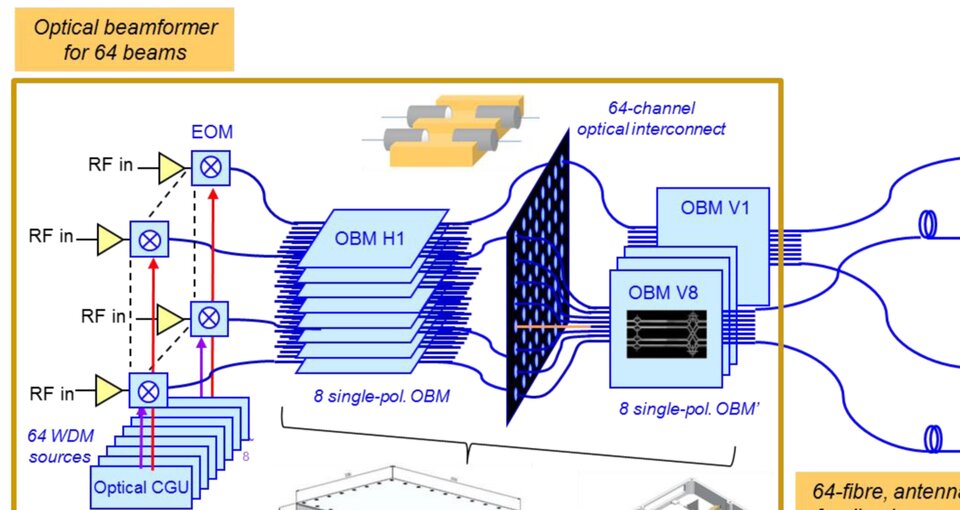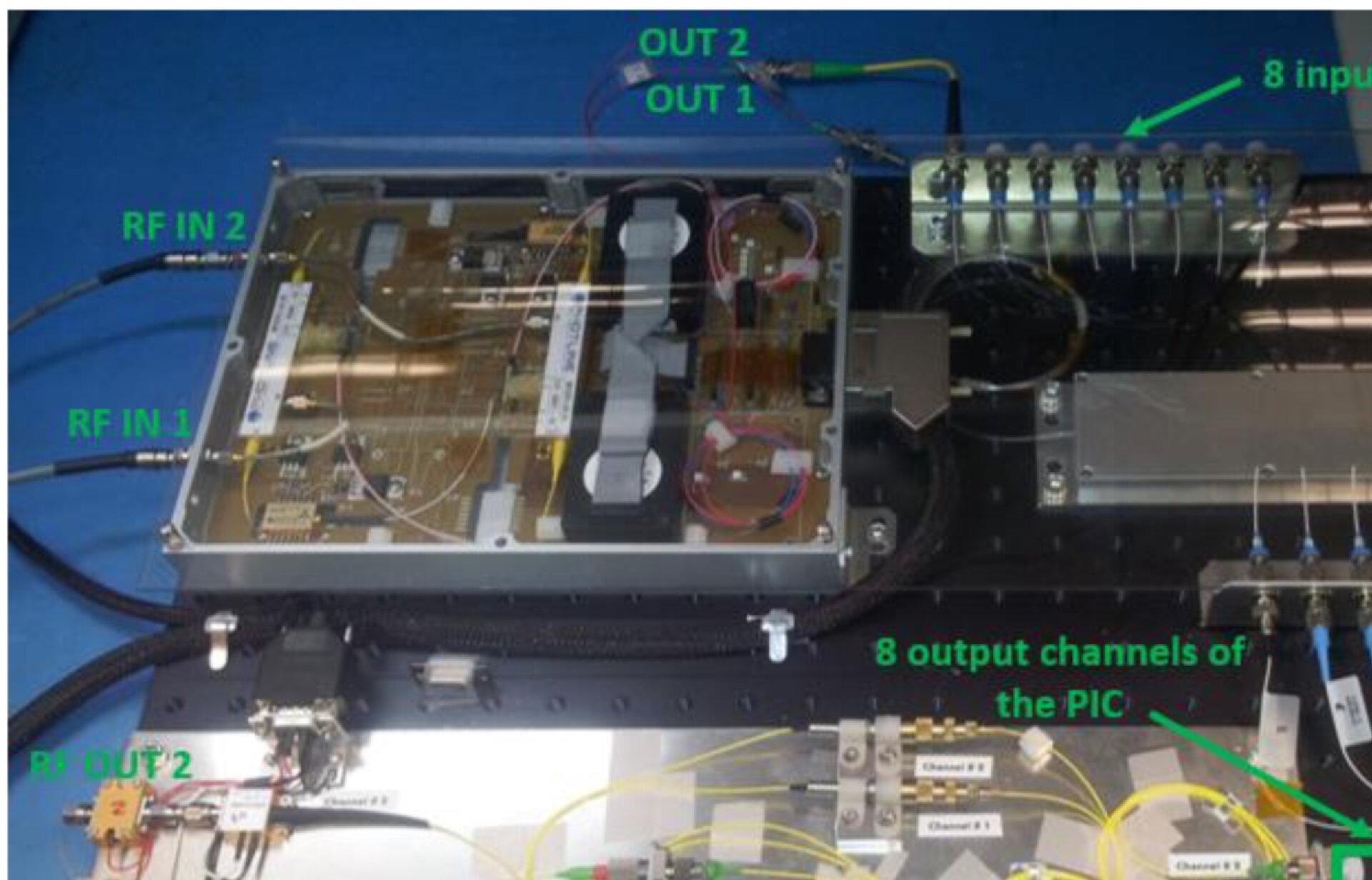Opto-microwave based Front-End for a multi-beam large Direct Radiating Array Antenna (OMFE)
| Programme: | TRP Workplan | Achieved TRL: | 3 |
| Reference: | T516-018MM | Closure: | 2016 |
| Contractor(s): | DAS Photonics (ES) | ||
In classical multi-beam coverage scenarios the generation of regularly-space spot beams with a large beam-former is very much simplified by the use of Butler Matrices arrangements. The microwave implementation of such a matrix becomes challenging (due to increased mass, integration issues and EMI) while the digital one is limited in usable BW due to power constraints. An alternative is to use integrated optics technology where volume and mass can be drastically reduced at the expense of acceptable power consumption. The activity addresses this option.
Objective(s)
The objective of this activity is to design, manufacture and test a proof-of-concept demonstrator of the opto-microwave front-end for a large direct radiating array antenna at Ka band using micro-photonic technologies.
Achievements and status
The activity demonstrated an OMFE based on a 8x8 optical Butler matrix for achieving phase shifting. The matrix itself was implemented by microphotonic technology Ge-doped Silica whereas the optoelectronic interfaces were based on discrete photonics. The phase distribution control was excellent and acceptable amplitude uniformity. The optical distribution of the signals to the antenna array elements with path equalization through miniature optical delay lines has also been demonstrated along with efficient electro-optic conversions. The end-of-end RF performance was compliant to the specifications stated by the SoW.

Benefits
The main benefits of this technology are the reduced volume and mass (while it requires additional power), increase flexibility in the system integration and broadband operation for large direct radiating arrays (hundred of elements) as needed in the next Very High- Throughput Satellites (VHTS) thanks to the use of true-time delay features.
Next steps
The work on the microphotonic Beam forming network will continue with further development continue under the ARTES SCYLIGHT/C&G co-funded and industry initiated program targeting TRL-8 by 2020. The main aspects to improve include further integration of the TTD sections, improvement of the optical performance of the optical Butler matrix, yield and inter-stage interconnection with integrated path-equalisation.





